Florence tips by a local: what to know before going
I have collected in this post all the tips for visiting Florence, Italy, and all the things you should know before traveling there. These tips are the result of my direct experience throughout my entire life! Besides being a native Tuscan and Florentine, I am also a licensed tour guide with 10 years of experience. Tips from other travelers are helpful, but those from locals are better! (Especially if they work in the tourism field).
- Learn more about me and job as a tour guide in Florence
I am regularly updating this post with new information and with the questions that travelers ask me for advice.
You might also like:
General tips for visiting Florence
Here are all the things to know before visiting Florence, Italy. Traveling in Italy is really super easy even for those visiting this country for the first time. Most Italians speak at least a basic English and you will always be able to find a way to make yourself understood. Those who work in tourism usually speak a good English. Other languages such as German, French and Spanish are less commonly spoken.
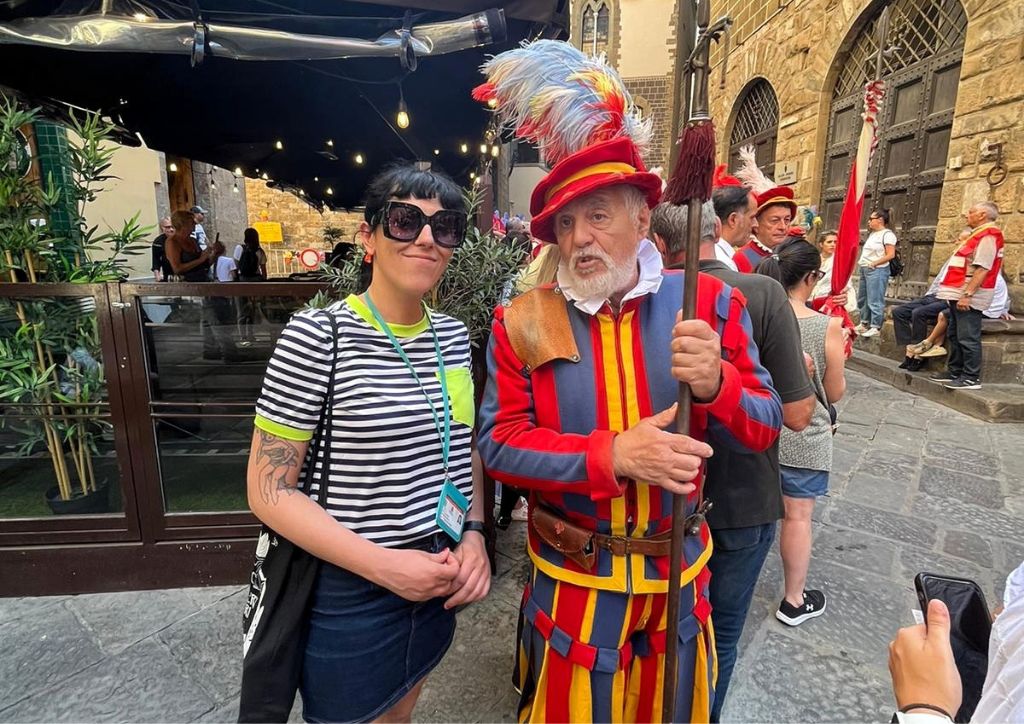
Florence or Firenze?
Firenze is the Italian name of the city, while Florence is the English translation. Keep that in mind, because when you’ll be waiting for a train or when you’ll be given an address, it will say Firenze and not Florence.
Best time to visit Florence
This is a very large topic! In short, I will tell you that in my opinion the best time is late autumn and the end of winter, when the city is less crowded and prices are at a minimum. In spring and autumn there is an excellent weather, but the prices are already high. Summer is the busiest, most expensive and hottest period of the year.
- If you want to learn more, read my article about the best time to visit Florence.
Summer is hot. Really… No jokes!
Florence has always been one of the hottest cities in Italy in the summer, but in recent years, with climate change, things have gotten worse. Summer is becoming unbearable: over 3 months of sultry heat with temperatures above 38-40 ° C (100-104 ° F) and without a drop of rain.
If you can, avoid visiting Florence in July and August, as they are the hottest months and it is increasingly difficult to stay outdoors during the day. If you don’t have a choice, be prepared to face very hot, muggy and humid weather, and to fight against an army of mosquitoes.
Ask recommendations to locals
Reading travel blogs to find information before leaving for a trip is fine, I do too! But the advice a local can give you is invaluable and often not found online.
If you are undecided about where to eat, what to visit or what to do in the evening in Florence, ask Florentines! It is the best way to find authentic and off the beaten path places and experiences.
Have some cash with you, but not too much
In Italy and Florence it is common to use cash for small expenses of a few euros, for example at the bar to pay for a coffee. But since some time in Italy it is mandatory for shops, restaurants and other businesses to accept credit card payments, even for small amounts. So don’t worry about not having enough cash with you. It is not a good idea to have too much cash, there is always the risk of losing it or being robbed.
Withdraw cash from bank ATMs
Always use bank ATMs, never use the yellow and blue ATMs that are often installed in shops, because they are the least secure. Unfortunately, in the past it happened that the credit cards of Florentines and travelers were cloned through the ATMs of the shops.
Pay attention to pickpockets
Unfortunately, pickpockets are common in Italy and also in Florence. The blokes are good at their dirty work, I’ve been pickpocketed several times too. Pay close attention to where you put your belongings, do not put your wallet in your trouser pockets and always keep an eye on bags and backpacks.
Pickpockets are mostly active in narrow, crowded, outdoor places: around the Duomo area (especially in front of the gates of Paradise of the Baptistery), in piazza della Signoria (in the narrow space between Palazzo Vecchio and Uffizi) and outside the Accademia Gallery museum.
For peace of mind you can use an anti theft belt bag to hide money and documents, or an anti theft backpack.
Avoid scams
Scams are common in every city, and so they are in Florence. The most common tourist scams are:
- Pickpockets
- Illegal street vendors
Illegal street vendors will try to sell you prints and other kind of stuff, just say no. Other ones will start a friendly conversation with you, and then pretend to give you a bracelet as a gift (it’s not free obviously). Avoid random conversation with strangers in crowded piazzas, and just say no when they offer something to you.
Many people are still talking about taxis overcharging, but believe me, this is not happening in Florence. The main goal of Florentine taxi drivers is to get you to your destination as quickly as possible, in order to be able to make another ride. The only problem is traffic: if a taxi driver decides to take the longer route it is because he knows that the shorter route takes longer due to traffic jams.
Some shops are closing at lunchtime
Many shops, especially the smaller ones, close for lunch, usually between 1 pm and 3 or 4 pm. Even if more and more shops in the historic center are open all day, there are still many activities that follow the old Italian tradition of taking a break for lunch and perhaps a siesta before returning to work. Always check the opening and closing times of the shops where you want to shop, before you go.
Respect public works of art
Florence, like many other Italian cities, is chock full of ancient works of art, placed in public places such as streets and squares. Fountains, statues, Renaissance palaces, old churches … most of these things in Florence are ancient, precious and protected as a work of art. Going beyond the fences, climbing the sculptures, diving into the fountains are not only disrespectful behaviors, but also constitute crimes.
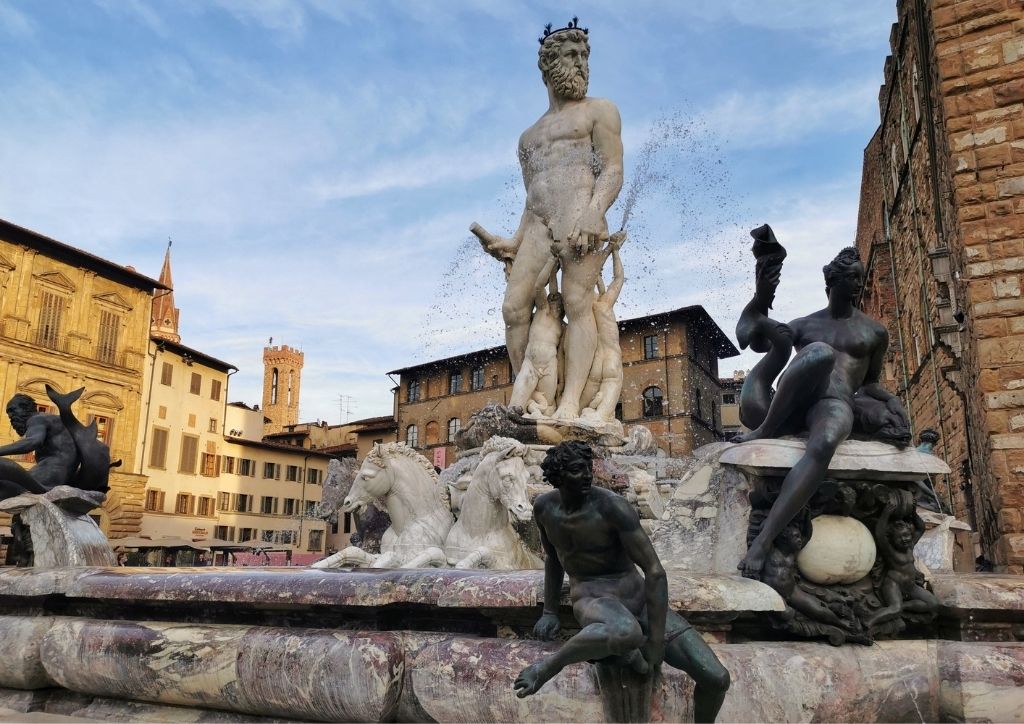
Don’t picnic on churches’ steps or doorsteps
The growing trend of panini and schiacciata in Florence has resulted in the presence of hundreds of people having picnics seated everywhere, from the doorsteps of the houses to the steps of the churches. You can imagine that no one likes to have the entrance of the house occupied and dirty by tourists. Moreover, eating and drinking on the steps of the churches is prohibited out of a matter of respect for the sacred place.
Many people have to hose their doorsteps multiple times a day to avoid people sitting on it to eat. Even the director of the Uffizi Gallery Eike Schmidt complained about the dirt and the occupation of the Uffizi steps by tourists eating sandwiches!
Tipping in Florence and Italy
Tipping is not mandatory, but it’s greatly appreciated. No-one will be offended if you don’t tip, but if you do, you’ll make someone feel rewarded with a sincere show of appreciation for their work.
It’s okay to tip waiters at restaurants and bars, tour guides, drivers and delivery riders. A 10-15% tip is usually appropriate.
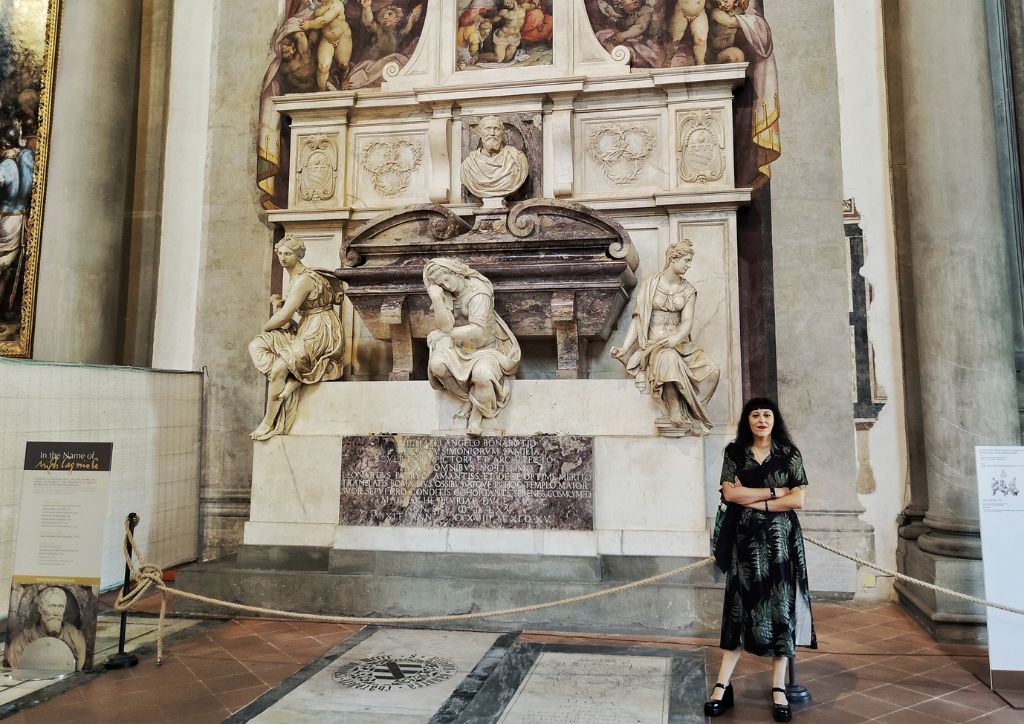
Tips for visiting museums, churches and other places in Florence
Museums, art and history are the main reason why so many travelers choose Florence, Italy. The city has over 50 museums, and the Uffizi Gallery and the Accademia Gallery (with Michelangelo’s David) are the most important and visited.
But there are dozens of other museums to visit in Florence, from Pitti Palace with the Boboli Gardens to the Bargello, with the sculptures of Michelangelo and Donatello.
Also check the things to do in Florence on a rainy day
Book museums in advance
Book your museum tickets as early as you can. That’s the best tip for visiting Florence that I can give. Aside from short off-season periods, museums in Florence are always crowded. Some museums, such as the Accademia Gallery, even require a 2-hour queue under the scorching sun in summer … unless you have booked your ticket in advance. By booking tickets online you receive a precise time slot, and this is the only way to skip the line.
- Tips for visiting the Uffizi Gallery
- Uffizi gallery: what to see
- Tip for visiting the Accademia Gallery
I recommend that you book your tickets on the official sites of the museums. All other websites are resellers and top up the ticket price. However, they are a good solution if the tickets on the official website are sold out.
Book your tickets as early as possible, because in the high season it is easy for them to sell out several days in advance.
- Uffizi and Pitti Palace tickets (official website)
- Galleria dell’Accademia tickets (official website)
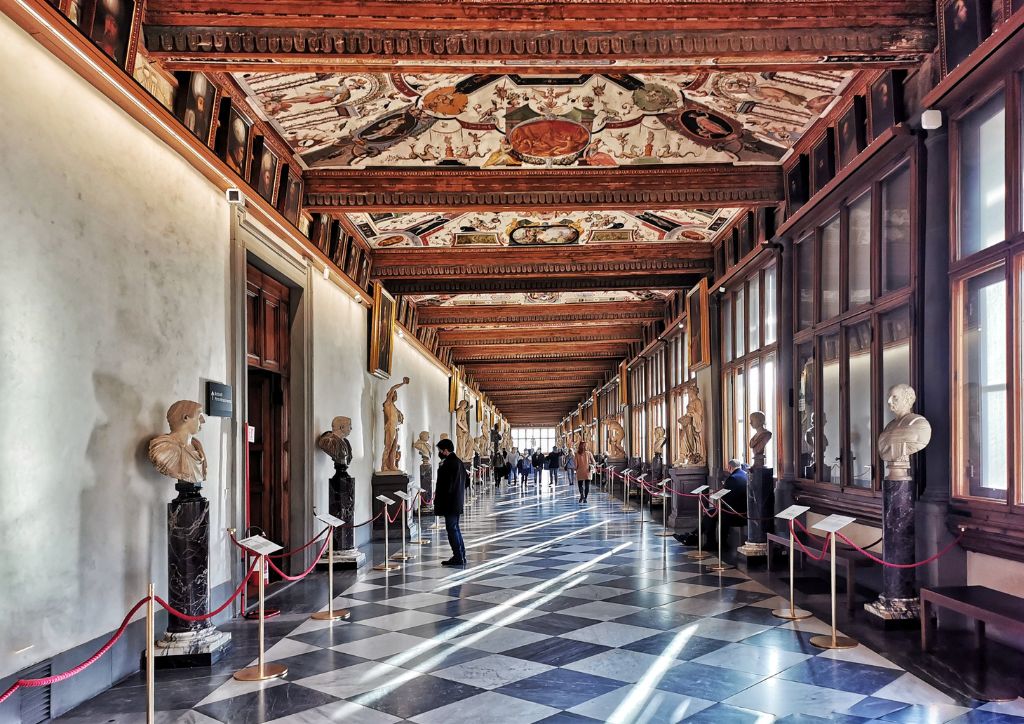
Monday is the closing day of national museums
On Mondays, all Italian national museums are closed, including those in Florence (Galleria dell’Accademia, Uffizi Gallery, Pitti Palace and Boboli Gardens). So plan your visit taking into account the closing day. As a result, museums are busier than usual on Sundays and Tuesdays.
There are many other museums and churches that remain open on Mondays, such as the Bargello museum, the Palazzo Vecchio museum. Also most of the city’s churches (the cathedral, Santa Croce, Santa Maria Novella) will be open.
Rules for visiting museums in Florence
Almost all museums in Florence have a metal detector at the entrance. For safety reasons, it is not allowed to carry weapons, blades, liquids other than water, tripods and selfie-sticks inside.
- Bottles of water are allowed only if they are smaller than a liter.
- Inside the museums you can take photographs, but without flash.
- Large backpacks and long umbrellas should be left in the cloakroom (attention! The Accademia Gallery has no cloakroom).
- no eating is allowed except inside the cafeterias of museums.
Dress code for churches
Most of the churches in Florence are still used as places of worship, and masses and religious services are held there on a daily basis.
Catholic churches require a dress code: knees and shoulders must be covered. So no tank tops, miniskirts or shorts, even for men.
In the summer, if you don’t want to wear to over-dress yourself, you can bring a light scarf with you to wrap around your shoulders or legs.
- My guide for visiting the Duomo of Florence
- Things to know to climb Giotto’s bell tower
Do not visit churches during mass
During mass, many churches close the entrance to visitors (if admission is subject to a fee). It is still possible to enter churches with free admission during mass, but it is considered disrespectful.
If you really want to take a look during mass, try not to disturb! At the most, you can take a look by staying at the back of the church, without walking in the aisles.
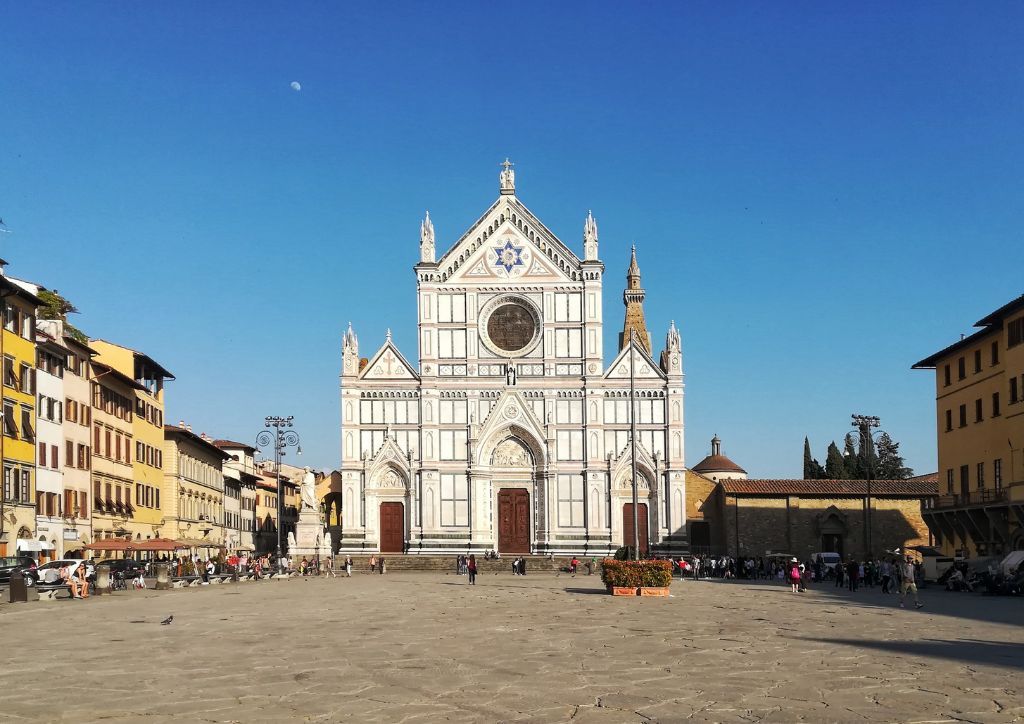
Cross the river and visit Oltrarno
Arno is the river that crosses Florence, and Oltrarno means across the Arno. So Oltrarno in the district of the city located across the river, on the southern side of it. It is one of the most authentic neighborhoods in the city, where many locals still live and where there are restaurants, bars, antique and vintage shops, tiny little piazzas and alleys.
Piazza Santo Spirito is the perfect place to begin the discovery of Oltrarno, with the beautiful Renaissance church designed by Brunelleschi. In the morning there is a lively market, and in the evening it becomes a popular place for nightlife, where to enjoy a glass of wine or eat something typical.
Take day trips outside of Florence
Florence is the perfect base for exploring the surroundings and Tuscany. If you have enough time, I recommend that you dedicate a few days to day excursions.
Here you will find all the information you’ll need to plan one of the best day trips from Florence.
The most popular day trips are:
- Chianti and Siena
- Wine tasting in Chianti, Tuscany
- Pisa and Lucca
- Cinque Terre
- Truffle hunting experience from Florence
I also wrote a blogpost about how to get from Florence to Pisa and how to go from Florence to Lucca.
Watch the sunset
The best place to watch the sunset in Florence is Piazzale Michelangelo, a panoramic square with a stunning view over the city. It’s free and the view is magnificent, especially at sunset, when the sun goes down just behind the city bridges along the Arno River.
Piazzale Michelangelo can be very busy: go up the hill until you reach the nearby church of San Miniato al Monte to enjoy the same splendid view, but with fewer people. Behind the church there is the beautiful monumental cemetery of Florence, the Porte Sante Cemetery.
- Also check: best panoramic views of Florence
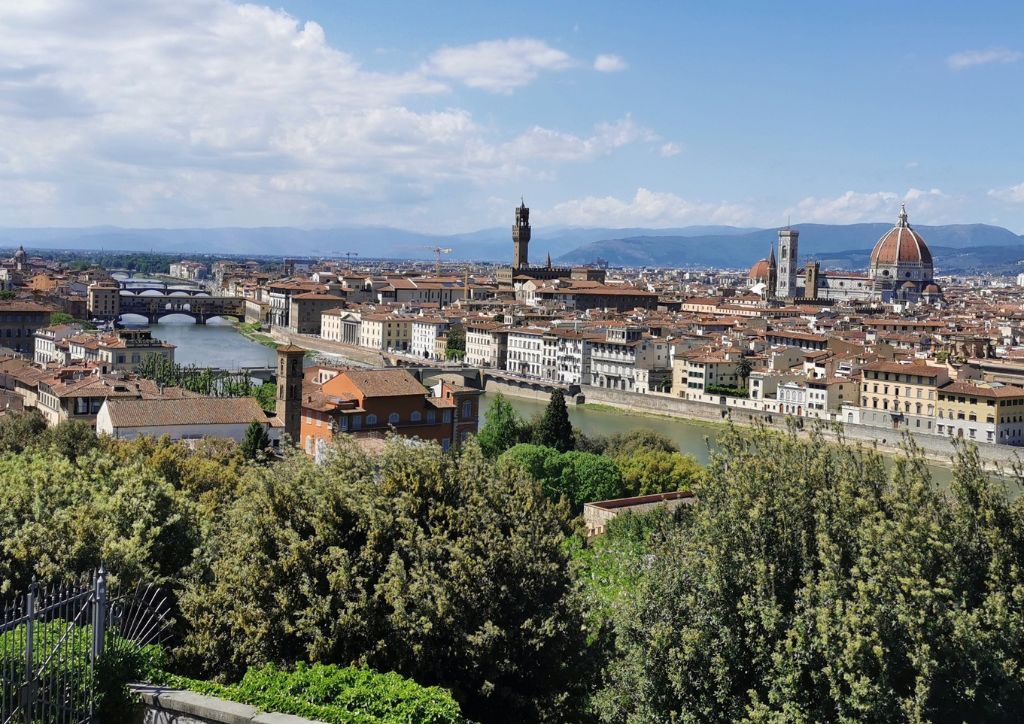
Tips for eating and drinking in Florence
Florence is also famous for its traditional cuisine, made of dishes such as ribollita soup with tuscan kale and beans, the famous Florentine steak and lots of tasty pastas. And just like in all of Italy, there is a strong coffee culture in Florence. Here are some tips about restaurants, bars, eating and drinking in Florence.
If you want to learn how to make gelato, pizza and pasta, take one of the top cooking classes in Florence.
Dinner time in Italy is late
Dinner time in Italy varies a lot from north to south, but it is usually later than in other countries such as the United States or the United Kingdom. Generally, the further south you go, the later you dine. In northern Italy, dinner starts around 19.00 (7 pm), while in Sicily and the south it is normal to have dinner at 9 pm or even 10 pm, especially in summer.
Florence is located in central Italy, and dinner time is usually around 8 pm.
Espresso coffee culture
The coffee culture in Italy and Florence is all about espresso. Most of Italians drinks its espresso coffee standing at the bar. It’s considered a quick treat at any time of the day. It’s not so common to drink big americano coffee or lingering in the bar more than necessary.
Latte is just milk
Latte is the Italian word for milk. I know, I know, in English speaking countries a latte is a coffee with milk. But if you order a latte in Italy, you will get a glass of plain milk, with no coffee.
If you want coffee and milk together you can order a caffellatte or a macchiato coffee (an espresso with a drop of milk). Or also a cappuccino, but keep in mind that one of many unwritten and mysterious food rules of Italy prohibits the cappuccino after 10 am.
Table service
Most of the bars and cafes of the city will charge some extra money for table service. This means that if you take a seat to drink your coffee and to eat your pastry, you will likely pay an extra fee.
That’s why most of Italians are eating their breakfast and drinking their coffee standing at the bar!
Water in restaurants and coperto charge
Water must be ordered at the restaurant, and it’s bottled: they don’t usually serve complimentary tap water. So it’s not free.
Also, restaurants usually charge a few euro per person for coperto, that is a cover charge to offset bread, oil, salt, etc. Coperto is controversial even among Italians, but actually is done by almost every single restaurant. Remember that coperto is not the tip!
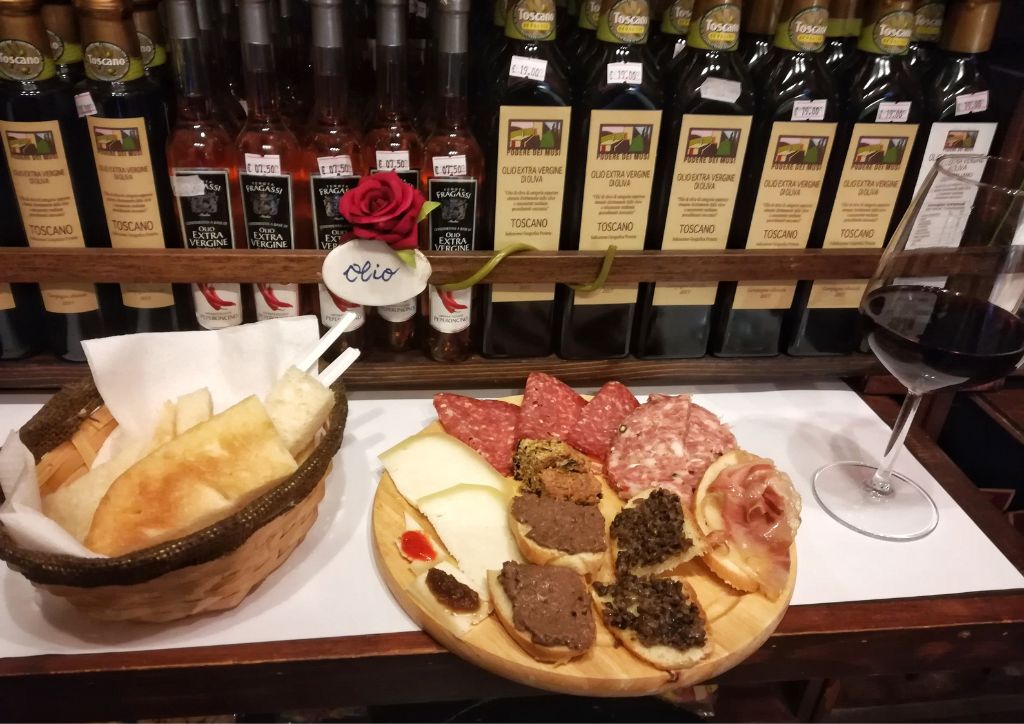
Ask for the restaurant bill
When you have finished eating, ask for the restaurant bill to be brought to you. In Italy, the bill is usually brought only when requested, because it is considered rude to rush those who are eating.
For the same reason, don’t expect the waiters to come and ask you repeatedly if everything is okay or if you need something. They will come to you just to bring you the dishes you ordered. If you need something call them and they will be happy to help you. Otherwise they won’t bother you during the meal.
Talking about restaurants and tips for visiting Florence…
- Best places to eat florentine steak
- Eating in Florence on a budget
- Vegetarian and vegan restaurants in Florence
Indulge into aperitivo
Aperitivo is a big thing in Italy, a staple of food and drinking culture. The aperitivo is that moment before dinner, when you share a glass of wine or a spritz, and something to eat with your friends. Aperitivo is usually made around 6.30 – 7.00 pm.
A perfect place to have an aperitivo in Florence is Piazza Santo Spirito, in the Oltrarno district. In this square there are many bars, wine bars and restaurants where you can have an aperitivo, a dinner and enjoy the local nightlife.
- Check my blogpost about the best rooftop bars in Florence!
- Take one of the best wine tours in Florence and Tuscany
Eat a lot of gelato!
We take gelato very seriously here in Florence, because it was invented here in 1600! No surprise that in Florence we have some of the best gelato places in Italy, the standard is very high.
I love gelato and I wrote an article on this topic: find out the best gelato in Florence.
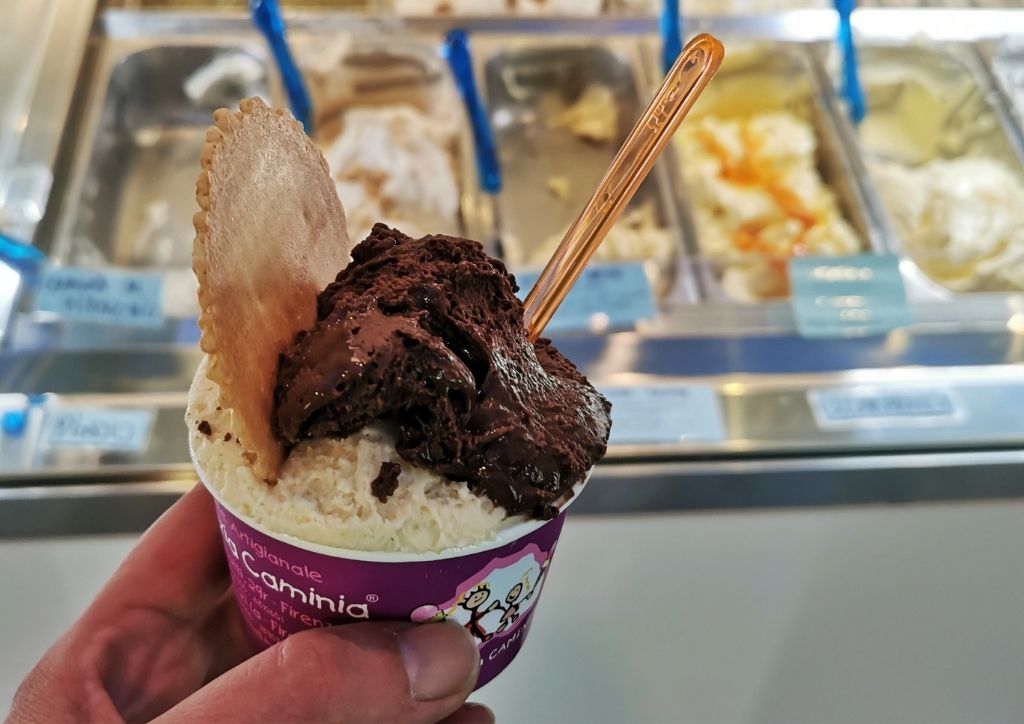
Tap water and drinking fountains in Florence
Tap water in Florence is safe and drinkable, so enjoy it, it’s also free! Buying bottled water in the historic center can be expensive, and there is no need to waste your money or plastic. Bring a reusable bottle (a stainless steel thermal bottle in the summer is a great idea) and refill it when you need it.
There are also many drinking fountains spread all over the historic center… Sometimes they are hard to spot but they do exist. There is even a drinking fountain on the northern side of Palazzo Vecchio, which is pouring both still and sparkling water!
Tips for moving around and about transportation in Florence
I have extensively wrote about transportation and getting around in my post about how to move around in Florence, so read that for more details about public transportation.
Here are some general tips for visiting Florence and easily getting around the historic center and the most popular areas of the city.
Do walk. Almost everywhere
Florence is a small city, and the historic center, where all the main tourist attractions are, is totally walkable. Also the Oltrarno district can be easily reached on foot. Just wear comfortable walking shoes and walk. This is just the best way to enjoy the streets of Florence, its palaces, the beautiful doors and door knobs, the general atmosphere of the city. And then this is how most of us Florentines move around the center!
During your stay in Florence you won’t really need to take public transportation unless you don’t want to walk (maybe you’re tired, or maybe you don’t walk to walk around alone late at night) or if you are planning to get out of the center.
Don’t walk in the middle of the streets
Although the historic center of Florence seems largely closed to traffic, it is only partially so. Many streets, even if they are full of pedestrians, are used for the circulation of some vehicles: those of residents and workers, for deliveries, law enforcement and public administration, taxis, ambulances and hundreds of bicycles.
For the locals who live, work and move around the historic center, having to dodge the distracted tourists walking in the middle of the street is not only annoying, but above all dangerous.
Walk on the sidewalks whenever possible (some alleys are just too narrow!). And watch out for vehicles arriving behind you, scooters and even bicycles.
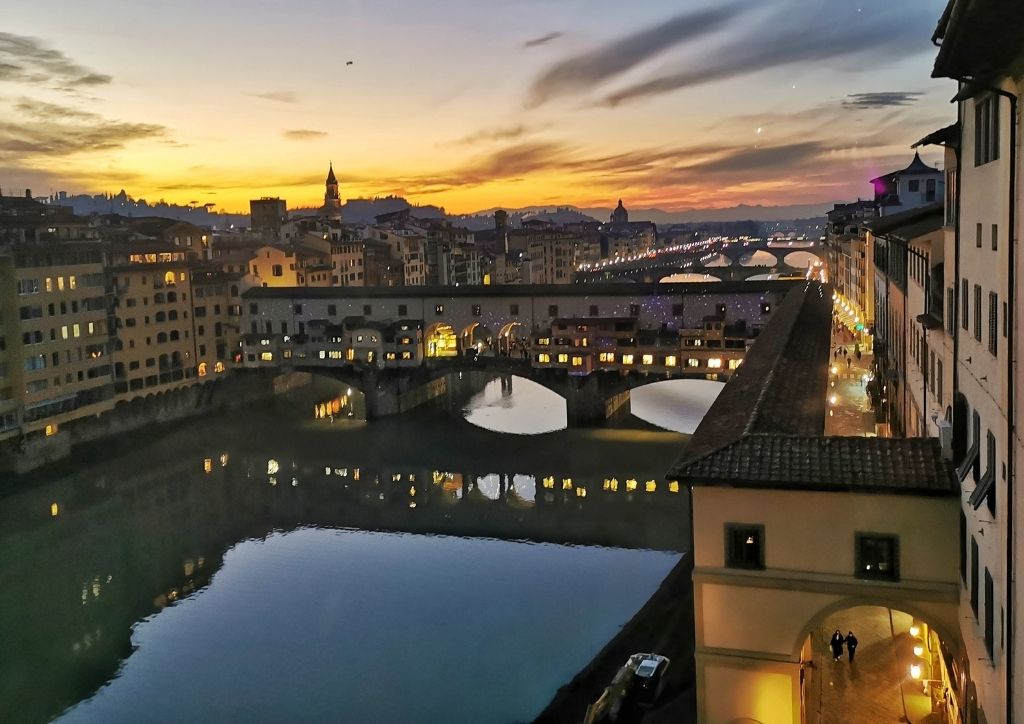
There’s no Uber in Florence, Italy
Unfortunately there’s no Uber in Florence. There is only Uber Black, which is only for private drivers, but honestly it’s not convenient to book a private driver through Uber Black.
The only option are taxis, and yes, they are quite expensive.
How to take a taxi
Most locals when they have to take a taxi don’t stop it by hailing when they see it go by. Instead it is more common to call them on the phone, and in less than 5 minutes a taxi will arrive where required. There are also taxi stands in the main city squares such as piazza Santa Croce, piazza Santa Maria Novella, at the airport and in front of the train station.
But if you a wave at an available taxi while it is passing it will stop anyway, I sometimes do!
Phone numbers of the two taxi companies in Florence:
- +39 055 4390
- +39 055 4242
They both have fixed special fares for airport rides.
- You can also book your airport taxi on Booking.com.
Buy bus tickets before boarding
You have to buy your ticket before boarding buses and trams, and then stamp it on board. Tickets can be purchased in tobacconists and vending machines (in Piazza San Marco and at all tram stops).
You can also buy the bus ticket on board, using a contactless credit card. To learn more about buses and trams read my blog post about how to use public transport in Florence.
Watch out for ZTL if you are driving
ZTL is the traffic limited zone, and it’s matching the whole historic center (except a small stripe to get to the Santa Maria Novella train station). Only cars with a special permit can enter the ZTL, and those who do not have the permit are fined.
So if you are visiting Florence with a rental car, or with your own car, be careful! In my post on where to park in Florence I will explain in detail how to avoid the ZTL (and the fine!).
That’s it, I hope I haven’t forgotten anything! If you have any other tips for visiting Florence and what to know before going, leave me a comment and share your experience with other travelers.